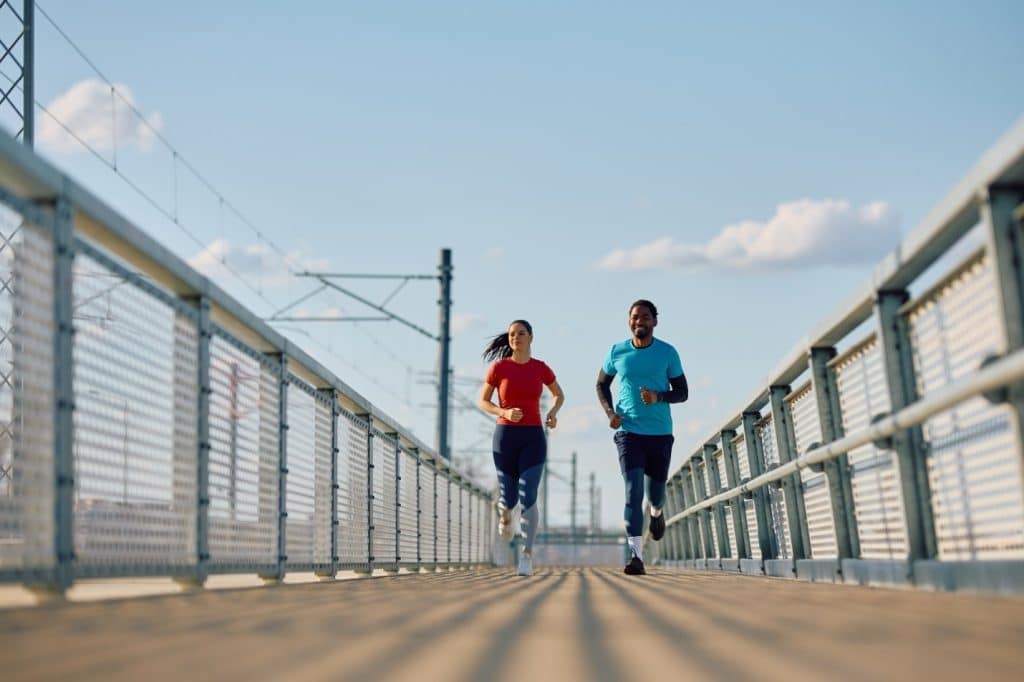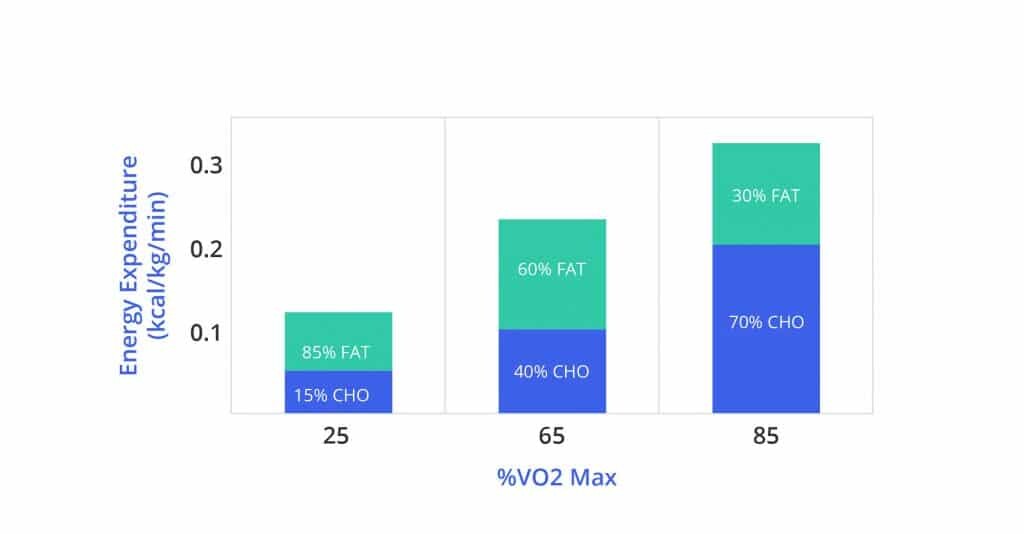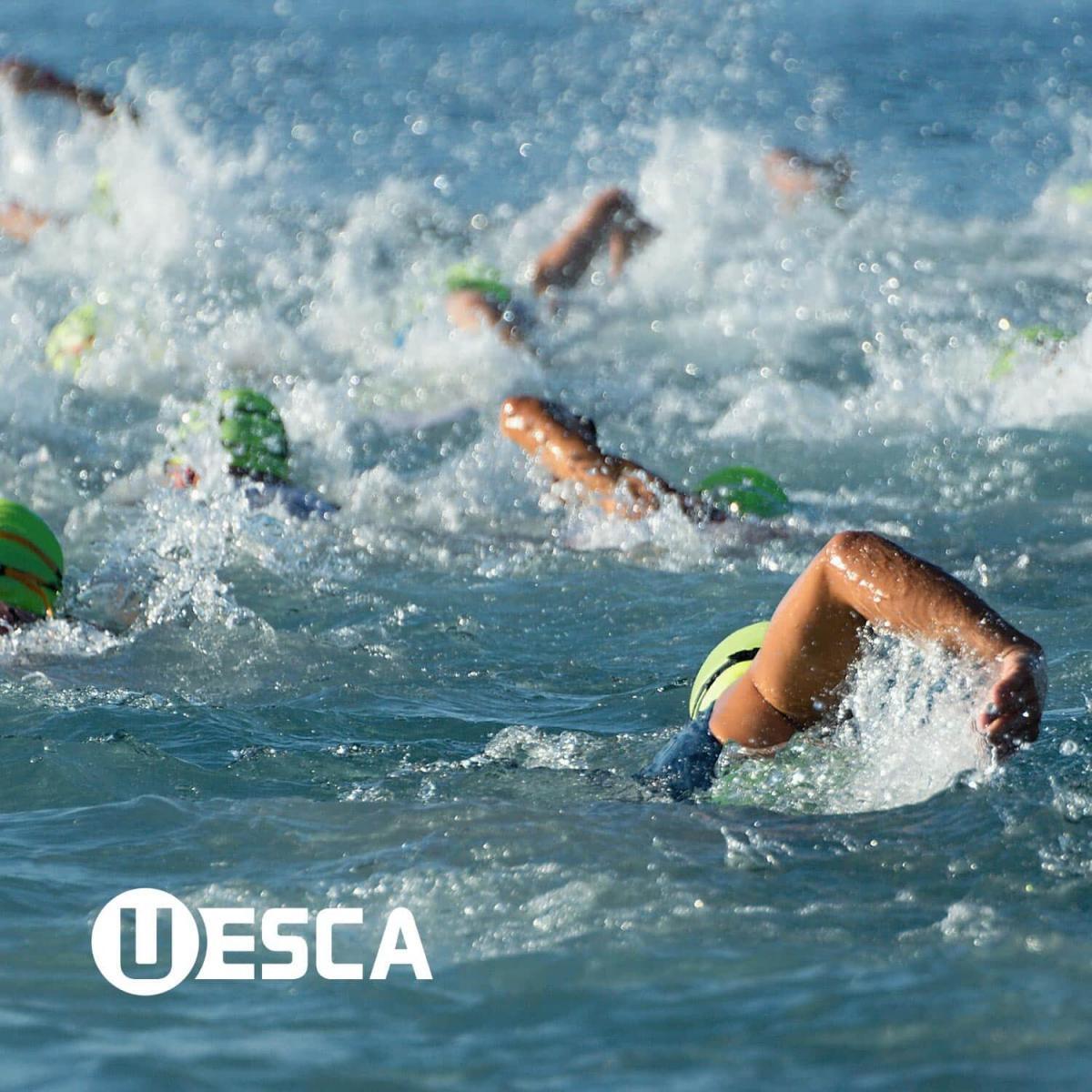Zone 2 is a trendy topic but how do you sift through all of the discussion to come to the right conclusions? We approach this topic through the lens of what we know scientifically, and a dose of reality to identify what coaches and athletes really need to understand.

Let’s First Define ‘Training Zones’
‘Training Zones’ are a number system used by some coaches to define various training intensities which elicit specific physiological adaptations.
For reference, below is an example of one type of zone system which identifies threshold heart rate zones.
| Level | Description | Percent | HR Range |
| 1 | Active recovery | < 85% of tHR | < 137 BPM |
| 2 | Endurance | 85% – 89% of tHR | 138 – 144 BPM |
| 3 | Tempo | 90% to 94% of tHR | 146 – 152 BPM |
| 4 | Threshold | 95% to 99% of tHR | 154 – 161 BPM |
| 5a | VO2 Max | 100% to 102% of tHR | 162 – 165 BPM |
| 5b | Anaerobic Capacity | 103% to 106% of tHR | 167 – 171 BPM |
| 5c | Neuromuscular | > 106% of tHR | > 172 BPM |
In recent years, one zone in particular, zone 2, has gotten a lot of attention in the endurance sports world as well as in the media – specifically due to claims that this zone is the most optimal intensity for improving mitochondrial and fatty acid oxidative capacity. Zone 2 is generally known as the ‘endurance’ zone. Before we get into the specifics of zone 2, it is important to appreciate that the exact definition of zone 2, and thus how zone 2 is applied in training scenarios, is inconsistent. Zone 2 is often described as being a pace during which an athlete can comfortably talk, or a pace that one can continue for long periods of time. It is described as low intensity, or sometimes moderately low intensity. From a physiological point of view, zone 2 (~ 65% of VO2 Max) is the intensity at which individuals are most optimal at burning fat from a percentage basis (often termed fat max’) – see below diagram.

But is Zone 2 really the endurance panacea that a lot of athletes and coaches think it is? A recent paper (narrative review) that assessed the efficacy of zone 2 training found that this may not be the case (Storoschuk et al. 2025).
Historical Perspective
Prior to delving into the discussion of Storoschuk’s paper and others of similar findings, it is important to appreciate the origins of zone 2 training. The first noted training practice based around low intensity was developed by German physician, Ernst van Aaken in the mid-20th century. Dr. Van Aaken’s training concept was termed, ‘LSD’ – short for ‘Long Steady Distance.’ As the name suggests, this training concept involved high volume, low intensity work. This training concept is often referred to as ‘base training,’ ‘aerobic training’ or presently as ‘zone 2’ training.
Dr. Van Aaken’s training concept was further elaborated on by physiologist and professor, Dr. Iñigo San Millán in the mid-1990’s. Specifically, Dr. San Millán noted that ‘zone 2’ was the most effective training intensity to increase mitochondrial function (11). Hence, the term ‘zone 2’ was defined and thus born.
Most recently, the concept of zone 2 training has also crossed over into the scope of general health and longevity.
The Research
It has long been known that high intensity, interval-type training methods induce large adaptations to mitochondria (6, 7, 8). In the same context, as compared to low intensities (zone 2 or lower), high-intensity exercise has been demonstrated to elicit greater mitochondrial capacity and aerobic conditioning (1, 2, 3, 4).
A meta-analysis of 56 studies by Granata et al., that looked at exercise intensity in relation to mitochondrial adaptations found that exercise performed below 60% of maximum work rate is not expected to increase mitochondrial density (1).
A recent study by Liu et al., found that low intensity endurance training does not increase capillary density (8).
In the analysis paper by Storoschuck et al., it is theorized that zone 2 training likely increases fat oxidative capacity in untrained/sedentary populations, but the effect of zone 2 training on athletic/trained populations with respect to increasing fat oxidative capacity is likely limited (9). As a point of reference, fatty acid oxidation refers to the metabolic process by which fatty acids are broken down to produce energy to create adenosine triphosphate (ATP). Corollary to this, a paper by Londeree et al., suggested that low intensity training (zone 2) may not be enough of a stimulus to elicit improvements in fatty acid oxidation in trained individuals, but likely would increase fatty acid oxidation in untrained/sedentary individuals (10).
Conclusion
According to Storoschuk et al., it is likely that the current emphasis on zone 2 comes largely from observational data of elite endurance athletes. As elite endurance athletes typically train at a higher volume than age-group athletes due to the distance demands of their races (thus including a higher volume of low intensities) and may be more genetically gifted in the realm of mitochondrial and oxidative capacity, the efficacy of zone 2 training appears to largely be a case of correlation versus causation. In the observation, it should additionally be noted that elite athletes also perform significant amounts of high intensity work – in both training and competition. With current biases focused on zone 2, it is likely that there is an erroneous overemphasis on zone 2 versus higher intensities being the reason for elite athletes’ successes.
It is important to note that the purpose of ‘training zones’ is primarily for the ease of intensity prescription and adherence. However, the physiology of the body does not function on a zone-based model. There are no distinct points at which physiological effects from exercise start and stop. Rather, multiple physiological effects are occurring in the body at the same time at varying exercise intensities.
It is also important to note that every training intensity has a place in an athlete’s training program. As such, ‘zone 2’ also has a place in one’s training protocol. As an example, zone 2 intensity training may be the predominant training ‘zone’ during the aerobic base building period, or during periods of fitness maintenance, recovery, or to provide endurance volume to support and athlete’s overall performance development.
Popular theories, such as various polarized training theories suggest that training at intensities above easy (i.e., zone 2) and below hard (i.e., zone 4 and above) is largely unproductive – often termed the ‘gray’ zone. These theories assert that this ‘gray’ zone, which typically correlates to zone 3, is “too hard” for recovery or to capitalize on endurance adaptations but not hard enough to develop significant gains in performance and thus amounts to “junk miles.” However, from a physiological point of view, this is not how the body works. As noted above, there are performance gains to be made at every training intensity. Moreover, since mitochondrial and fatty acid oxidation capacity increases with exercise intensity, zone 3 provides more aerobic physiological adaption than zone 2… hardly an ‘unproductive’ zone.
The information noted in this section and largely from the paper by Storoschuk et al., should not be interpreted as being ‘anti-zone 2,’ nor is it being suggested that all training should be high intensity. But rather that if a conditioned athlete is looking to maximize their gains from the standpoint of increasing their mitochondrial and fatty acid oxidation capacities, training at intensities higher than zone 2 will have the greatest bang for the buck – whether it be ‘mid-level intensities’ or higher. This is especially the case if an athlete is time-crunched – as a shorter but higher intensity training session may be more productive than a longer but lower intensity training session.
This finding puts into question the popular polarized training protocol mentioned above, where the far majority of training time is easy (i.e., zone 2) and the other small amount of time is at moderate to high intensities. As Storoschuk’s research found that the primary driver of aerobic performance gains is high intensity work, the ratio of easy-to-hard training intensities likely needs to be rethought with a higher distribution of high intensity work, and a less polarized emphasis. Additionally, the amount of time spent at various intensities is athlete-specific.
To hear a conversation with Dr. Brendon Gurd, Professor of Muscle Physiology at Queen’s University, and one of the noted researchers on this topic, watch the All Things Endurance Podcast Episode 34.
In summation, below are a few key take aways:
References
- Granata C, Jamnick NA, Bishop DJ. Training-induced changes in mitochondrial content and respiratory function in human skeletal muscle. Sports Med. 2018;48:1809–28.
- Gurd BJ, Menezes ES, Arhen BB, Islam H. Impacts of altered exercise volume, intensity, and duration on the activation of AMPK and CaMKII and increases in PGC-1α mRNA. Semin Cell Dev Biol. 2023;143:17–27.
- Ross R, De Lannoy L, Stotz PJ. Separate effects of intensity and amount of exercise on interindividual cardiorespiratory fitness response. Mayo Clin Proc. 2015;90:1506–14.
- Türk Y, Theel W, Kasteleyn MJ, Franssen FME, Hiemstra PS, Rudolphus A, et al. High intensity training in obesity: a meta-analysis: high intensity training in obesity. Obes Sci Pract. 2017;3:258–71.
- MacInnis MJ, Gibala MJ. Physiological adaptations to interval training and the role of exercise intensity: training adaptations and the nature of the stimulus. J Physiol. 2017;595:2915–30.
- Bishop DJ, Botella J, Genders AJ, Lee MJ-C, Saner NJ, Kuang J, et al. High-intensity exercise and mitochondrial biogenesis: current controversies and future research directions. Physiology. 2019;34:56–70.
- Torma F, Gombos Z, Jokai M, Takeda M, Mimura T, Radak Z. High intensity interval training and molecular adaptive response of skeletal muscle. Sports Med Health Sci. 2019;1:24–32.
- Liu Y, Christensen PM, Hellsten Y, Gliemann L. Effects of exercise training intensity and duration on skeletal muscle capillarization in healthy subjects: a meta-analysis. Med Sci Sports Exerc. 2022;54:1714–28.
- Storoschuk KL, Moran-MacDonald A, Gibala MJ, Gurd BJ. Much Ado About Zone 2: A Narrative Review Assessing the Efficacy of Zone 2 Training for Improving Mitochondrial Capacity and Cardiorespiratory Fitness in the General Population. Sports Med. 2025 Jul;55(7):1611-1624. doi: 10.1007/s40279-025-02261-y. Epub 2025 Jun 25. PMID: 40560504.
- Londeree BR. Effect of training on lactate/ventilatory thresholds: a meta-analysis. Med Sci Sports Exerc. 1997;29:837–43.
- San Millan I. #201: deep dive back into Zone 2. (Pt. 2). 2022








